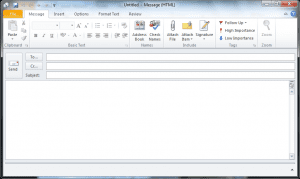One of the greatest advantages of being online is that you never have to miss a moment. And with SayPro’s online course in Microsoft Windows and internet, you can learn new skills whenever it’s convenient for you. Whether your Internet access is via Wi-Fi or through a crowded cellphone network, SayPro will teach you the fundamentals of using the web in an easy and user-friendly way. With video tutorials, quizzes and exercises, this program will make sure that you master everything from navigating on the web to downloading apps and streaming videos safely.
SayPro Online Course in Internet & E-mail 116931 is also suitable for beginners because we’ve designed it to be simple yet effective so that even someone who has never used their computer before can use it effectively!
Is your expertise related to Microsoft Windows and internet? If so, then SayPro is an apt destination for you. We are offering a comprehensive online course in Microsoft Windows 10 and internet technologies. The course will help you learn IT basics like computer hardware, operating system, networking etc. as well as various advanced features of the newest edition of Microsoft Windows 10. That’s not all! We also have e-mail/Internet fundamentals that teach you about email services, domain name registration etc.
Curriculum includes quizzes and exercises that test your understanding of the topic being taught. Besides, there is an active forum where students can share knowledge with each other regarding computer and networking issues in general or those specific to their area of expertise!
Do you want to learn Windows and internet in an easy way? Then SayPro is the perfect fit for you!
SayPro online course teaches users how to use windows and internet efficiently. After completing the course, users will be able to navigate their computers effortlessly and make the most out of their time on the web.
Whether you’re a beginner or an expert, SayPro is your go-to guide for learning Microsoft Windows 10 at your own pace. With this innovative online course, you’ll be able to work more confidently in no time!
Do you want to know how you can take full advantage of online services?
SayPro is a comprehensive online course that teaches you everything you need to know about the Microsoft Windows operating system and internet. It’s jam-packed with information, so there’s no way you’ll feel confused while learning it.
With SayPro, you’ll be able-bodied in handling your emails and surfing the internet in no time! Our experts have designed this course keeping professionals in mind and will make sure that even a novice user gets the most out of it. With SayPro, life has never been easier!
Want to learn Microsoft Windows and internet? SayPro online course is for you! This course will teach you all about how the internet works and what you can do on it. You’ll learn about e-mail, surfing the web, and more. Plus, our expert trainer has years of experience teaching people how to use computers and the internet safely. So whether you’re a beginner or an expert, our online course is sure to teach you everything you need to know!

